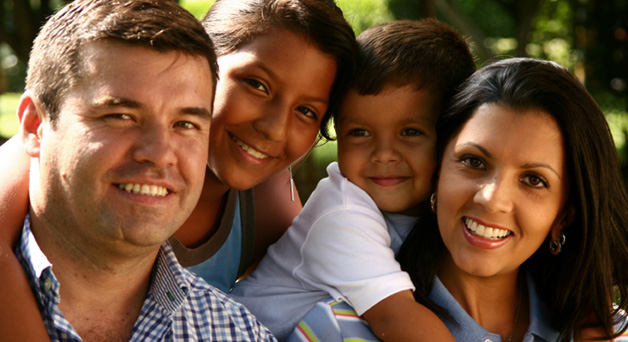Youth who receive special education services under the Individuals with Disabilities Education Act (IDEA 2004) and especially young adults of transition age, should be involved in planning for life after high school as early as possible and no later than age 16. Transition services should stem from the individual youth’s needs and strengths, ensuring that planning takes into account his or her interests, preferences, and desires for the future.
Family Engagement

Meaningful Family Engagement
Family engagement is essential in promoting healthy physical, cognitive and social-emotional development, and academic achievement of children and youth from pre-K to high school. Research shows that when families are meaningfully and continuously engaged in their children’s learning and development, they can positively impact their child’s health, development, academic, and well-being outcomes into adulthood.1,2
Description of Family Engagement
Strong family engagement happens when families have a primary and meaningful role in all decision-making that impacts every young person and their families. Meaningful family engagement is about improving outcomes for all youth and families and happens at the system level and at the service level.
At the system level, family engagement is evident when families routinely engage as equal partners with state and local leaders in planning, designing, and evaluating services, programs and policies that impact the lives of children, youth and families served.
Family engagement also happens at the individual service level where agency partners and a single family collaborate in making decisions that address their child’s unique strengths and needs and considers the family’s ideas of success. Meaningful family engagement requires that state and local leaders model and champion family partnership anchored by mutual respect, shared authority, two-way communication, and a commitment to a common vision and shared goals to improve outcomes for every young person and their family.3,4
Definition of “Family” in Family Engagement
Child and youth serving systems broadly define “family” in family engagement as including parents and other adult caregivers, acknowledging today’s varied family units and their needs for extended supports. For example, early childhood education and juvenile justice programming describe family engagement as including biological, adoptive, and foster parents; grandparents; legal and informal guardians; and adult siblings.5,6
Some agencies have broadened this definition of family to include related and non-related members. As an example, transition-aged and foster youth work with their providers to identify and name their personal family system that includes peers, mentors, and service providers who they trust and can count on for support. Key service sectors that are implementing family engagement plans and strategies to increase and improve the engagement of families in their systems and services include education, child welfare, juvenile justice, mental health, and primary health care providers.
References
Other Resources on this Topic
Announcements
Briefs
Collaboration Profiles
Feature Articles
Programs
Resources
Youth Topics
Youth Briefs
Research links early leadership with increased self-efficacy and suggests that leadership can help youth to develop decision making and interpersonal skills that support successes in the workforce and adulthood. In addition, young leaders tend to be more involved in their communities, and have lower dropout rates than their peers. Youth leaders also show considerable benefits for their communities, providing valuable insight into the needs and interests of young people
Statistics reflecting the number of youth suffering from mental health, substance abuse, and co-occurring disorders highlight the necessity for schools, families, support staff, and communities to work together to develop targeted, coordinated, and comprehensive transition plans for young people with a history of mental health needs and/or substance abuse.
Nearly 30,000 youth aged out of foster care in Fiscal Year 2009, which represents nine percent of the young people involved in the foster care system that year. This transition can be challenging for youth, especially youth who have grown up in the child welfare system.
Research has demonstrated that as many as one in five children/youth have a diagnosable mental health disorder. Read about how coordination between public service agencies can improve treatment for these youth.
Civic engagement has the potential to empower young adults, increase their self-determination, and give them the skills and self-confidence they need to enter the workforce. Read about one youth’s experience in AmeriCorps National Civilian Community Corps (NCCC).






